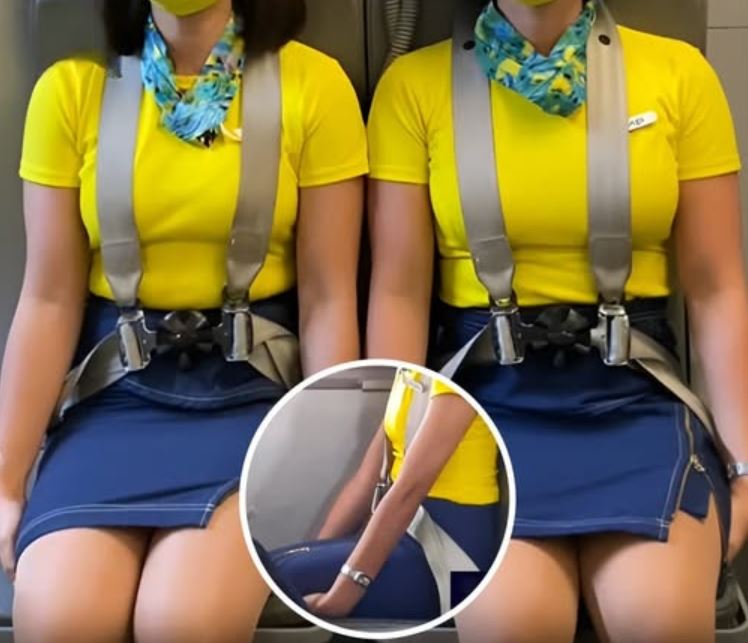If you’ve ever been on a plane, you’ve probably noticed flight attendants standing upright with their hands behind their backs before takeoff. This stance may appear formal or even rigid, but it serves a crucial purpose that goes beyond aesthetics.
According to airline worker Henny Lim, the way flight attendants position their bodies during takeoff and landing is carefully choreographed for safety reasons. By standing upright with their hands behind their backs, they can remain alert, calm, and prepared to respond quickly in case of an emergency.
What’s not immediately apparent is that flight attendants are also discreetly counting passengers using a small clicker concealed in their joined hands. This meticulous headcount ensures that everyone is accounted for before the plane embarks on its most critical phases of flight.
By keeping their hands behind their backs, flight attendants can maintain focus on their surroundings. Being prepared is paramount, as takeoff and landing are typically the most hazardous parts of any flight.
Once seated in their assigned jump seats, flight attendants follow another vital protocol: they sit up straight. To do this, they must buckle up, sit upright, and place their hands on their legs with their thumbs tucked in. This stabilizing position is designed to minimize body movement during turbulence and reduce the risk of flailing arms, which can cause serious injury.
During this time, flight attendants also conduct a “silent review,” mentally rehearsing emergency procedures and exit orders. They remain vigilant, monitoring their surroundings and scanning the outside environment for potential hazards.
The Federal Aviation Administration (FAA) and other regulatory bodies emphasize the importance of these safety protocols. By positioning their bodies correctly before flight, flight attendants can better protect themselves while remaining able to assist passengers in case of an emergency.
Flight attendants are shedding light on these safety measures through social media, educating passengers about the rules they follow. As people gain a deeper understanding and appreciation of flight attendants’ dedication to safety, they can trust and respect them more, recognizing the hard work they do to ensure passenger safety.
The next time you see a flight attendant standing with their hands behind their backs, remember that it’s not just a formal pose – it’s a deliberate and crucial part of their safety routine, showcasing their rigorous training and commitment to passenger safety.


